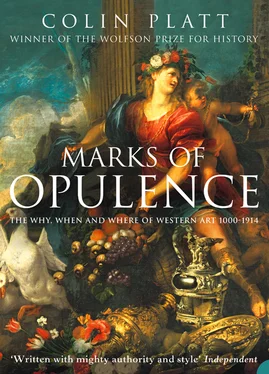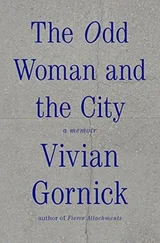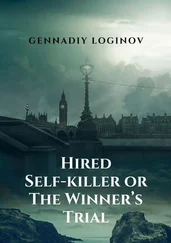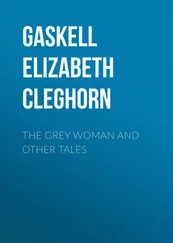Barton’s words were original, but his concerns were not. And never have prayers for the dead been invoked more assiduously than in the century leading up to the Reformation. Purgatory – where the shriven soul is comprehensively cleansed by fire and ice – was already an ancient concept when accepted as Church doctrine at the Council of Lyons in 1274. However, what had not been made so clear until that time was the clergy’s power of intervention. How long a soul must remain in Purgatory – ‘some longer and some shorter’ – would depend, the Church taught, not just on ‘whether they have done good on Earth before they died’ but also on ‘whether they have friends on Earth to help’. 23 And in the formal recognition of prayer’s supreme role in speeding release from torments so dreadful ‘that all the creatures in the world would not know how to describe their pains’, the first elements of a bargain were spelled out. ‘It is for the rich to pay, the poor to pray’, dictated the popular contemporary jingle. That implicit contract, once accepted by the wealthy, brought a flood of new investment to the arts.
‘For Jesus love pray for me’, urged John Tame (Barton’s contemporary) on his own founder’s monument at Fairford Church. ‘I may not pray, now pray ye, with a pater noster and an ave , that my paynys relessid may be.’ 24 And by 1500, when John Tame died, provision for personal soul-care – the earliest form of health insurance – had become so everyday that it would routinely absorb up to a third of a testator’s estate. John Tame was a rich clothier, and he built a big church. However, when the even wealthier nobility took out policies of their own, what resulted were huge factories of prayer. One of the greatest of these was the Burgundian tomb-church at Champmol, near Dijon, newly founded in 1378 by Philip the Bold (d.1404) for a double-sized community of Carthusians. The Champmol Charterhouse has gone. But among the fine sculptures preserved on its destruction is Claus Sluter’s highly original monument to Philip the Bold himself, where the duke’s recumbent effigy, hands raised in prayer, has hooded mourners processing round the tomb-chest.
As Adam Smith once wrote: ‘With the greater part of rich people, the chief enjoyment of riches consists in the parade of riches, which in their eye is never so complete as when they appear to possess those decisive marks of opulence which nobody can possess but themselves.’ ( Wealth of Nations ). And Philip of Burgundy’s sculptors – Jean de Marville, Claus Sluter and Claus de Werve in succession – were indeed the best that money could buy, while his monks were the most highly regarded. When other religious orders, condemned for lax observance and widely blamed for God’s wrath, were held in low esteem, the more ascetic Carthusians continued to attract patronage from those so rich that they could afford the high costs of the very best quality intercession. Carthusians were expensive. Rejecting the life in common, they lived out their silent lives in spacious private cells set about a great cloister, and only their little-used churches were ever small. Nevertheless, for all their expense, as many as seven of the nine English Charterhouses were to be of post-1340 foundation, including big double houses at London (1371) and Sheen (1414): the first owing its scale to great City fortunes sometimes dubiously acquired, the second to the free-flowing conscience-money of Lancastrian kings, troubled by the murder of an archbishop. ‘Five hundred poor I have in yearly pay’, boasts Henry V on the brink of Agincourt, ‘who twice a day their wither’d hands hold up toward Heaven, to pardon blood.’ ( Henry V , iv:i:294–6). And while the prayers of the destitute had particular worth, to those were now added the even weightier prayer barrages of Henry’s forty Carthusian monks at Sheen, next to his new manor-house, and of another sixty Bridgettine nuns at Syon Abbey (1415) across the river, storming Heaven together.
If soul-masses were indeed, as many supposed, ‘highest in merit and of most power to draw down the mercy of God’, there was no absolute limit to their numbers. What resulted was serious inflation. Whereas the endowment of between 1500 and 5000 soul-masses was considered usual – if by normal standards excessive – in the mid-fourteenth-century nobility of Bordelais, Bernard d’Ecoussans left provision for 25,000 masses for himself and another 10,000 for his forebears, Jean de Grailly bought 50,000, and Bernard Ezi doubled that number. 25 Prayer barrages of this density were clearly burdensome to heirs, as were the other works often associated with such programmes. It took, for example, very nearly half a century to wind up the personal soul-trust of Richard Beauchamp, Earl of Warwick (d.1439). And among the causes of this delay, hugely damaging to Richard’s heirs, was the commissioning in 1451 of a tomb and effigy of superlative quality – ‘to cast and make a man armed, of fine latten garnished with certain ornaments, viz. with sword and dagger; with a garter; with a helme and crest under his head, and at his feet a bear musled, and a griffon, perfectly made of the finest latten’ – to be housed in a splendid new chapel dedicated to the purpose and attached to the family’s collegiate chantry at Warwick Church.
While the Beauchamp investment was heavy enough, it could scarcely compare with that of many of the royal families of late-medieval Europe, or even of the greater princes of the Church. Exclusive Carthusians were again the first choice of Juan II of Castile to be custodians of the royal dead at Miraflores (Burgos), where an over-sized church began rising in 1442, to be ready at last by the mid-1480s to receive the sumptuous tombs of Juan II and Isabella of Portugal and of the Infante Alfonso their son, commissioned by Isabella of Spain (Alfonso’s sister) from the workshops of Gil de Siloé. A generation earlier, João I (the Great) of Portugal had made similar provision for his new dynasty. Mindful of the Virgin’s help in granting him a decisive victory over the Castilians at Aljubarrota in 1385, João (after some hesitation) chose a Marian order – Dominicans on this occasion – to tend the family tomb-church at Batalha, north of Lisbon. And there he still lies, in the most enormous state, next to Philippa of Lancaster, his English queen. 26
Philippa was the eldest daughter of John of Gaunt, son of one king (Edward III), uncle of another (Richard II), and father of a third (Henry IV). Her half-sister (by the duke’s second marriage to Constance of Castile) was Catherine, queen of Castile; and one of her half-brothers (by Gaunt’s third wife, Catherine Swynford) was the great priest-statesman Henry Beaufort (d.1447), ‘Cardinal of England’, Bishop of Winchester, and international diplomatist. In circles such as these, national frontiers had little meaning in the arts. Thus the architecture of Portuguese Batalha, in its primary phase, shows clear English influence, being an early demonstration of the close bond between the nations first established at the Treaty of Windsor in 1386. And when, in the 1430s, Cardinal Beaufort spent many months in the Low Countries on diplomatic missions to the Burgundians, he took the opportunity to have his portrait painted by Philip the Good’s most favoured artist, Jan van Eyck. 27 Beaufort was an old man when the painting was done, and he may already have been pondering his death-plan. Certainly, over the next ten years he took every known precaution to guarantee the comfort of his soul. While plainly confident of his ability to translate the wealth of this world into high-ranking ease in the next, Beaufort nevertheless made provision for an instant barrage of 10,000 soul-masses on his death. He endowed perpetual chantries at three great cathedrals (Lincoln, Canterbury and Winchester); made major contributions, similarly recompensed by prayer, to Henry VI’s mammoth educational charities at Eton and King’s College (Cambridge); and invested heavily in the rebuilding of the ancient hospital of St Cross (Winchester) as an almshouse or refuge ‘of noble poverty’. Even after these and much else, the residue of Beaufort’s estate was still substantial. All was to be spent – the cardinal instructed his executors – in such ways especially ‘as they should believe to be of the greatest possible advantage to the safety of my soul.’ 28
Читать дальше












